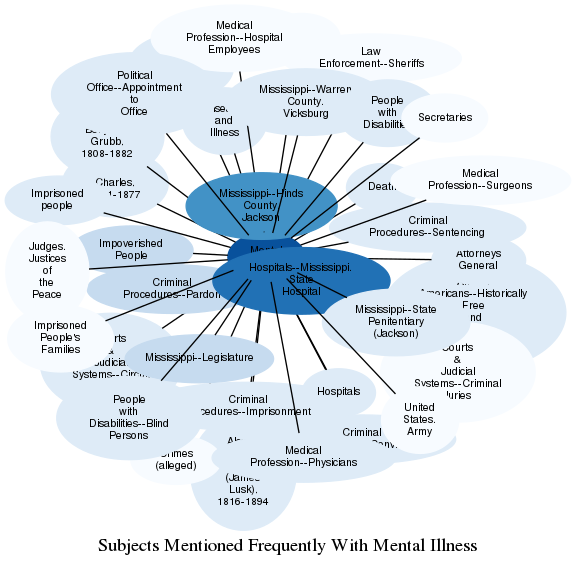Description
In the nineteenth-century United States, the diagnosis and treatment of mental illnesses advanced dramatically, though by 1900 it certainly still had far to go. In colonial America, mental illnesses were largely perceived as acts of God and thus inescapable and incurable. American society therefore dealt with people suffering from mental illnesses primarily through charitable organizations or benevolent societies like churches or almshouses.
Throughout the nineteenth century, however, as the ideals of the Enlightenment continued to evolve, Americans developed a more institutional, scientific approach to understanding and treating mental illnesses as curable and in turn developing the field of psychiatry. Psychiatrists and state governments founded state-funded asylums to study and treat people with mental illnesses in isolation to prevent both interruption of treatment and danger to society. While nineteenth-century psychiatrists employed many terms no longer accepted to describe mental illnesses, and while the methods they employed in their asylums have likewise been largely dismissed, the study and treatment of mental illness in the United States advanced rapidly in the nineteenth century in tandem with greater societal and educational reforms.
It is critical to note, however, that much of this advancement was aided by slavery. The Eastern Lunatic Asylum of Virginia, for example, relied on enslaved people as both patients and caregivers, and ideas about blackness and insanity were often mutually dependent. (Wendy Gonaver, The Peculiar Institution and the Making of Modern Psychiatry, 1840–1880).
One notable, and widespread, mental illness afflicting Americans in the late nineteenth and early-twentieth centuries was the Post-traumatic Stress Disorder (PTSD) experienced by many Civil War veterans. While psychiatry had evolved over the century, its failure to diagnose and treat widespread PTSD glaringly reveals its limits (Encyclopedia of the United States in the Nineteenth Century, Vol. 2, 283-285).
Related Subjects

The graph displays the other subjects mentioned on the same pages as the subject "Mental Illness". If the same subject occurs on a page with "Mental Illness" more than once, it appears closer to "Mental Illness" on the graph, and is colored in a darker shade. The closer a subject is to the center, the more "related" the subjects are.